
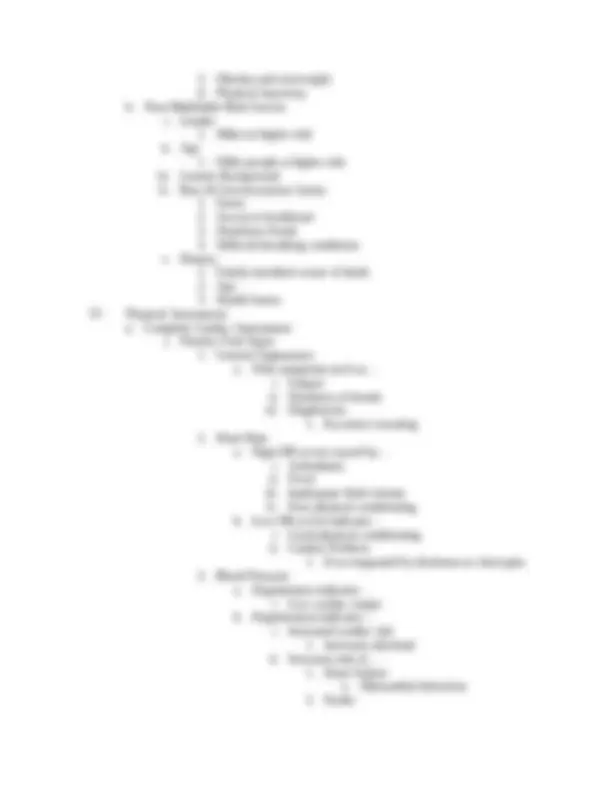
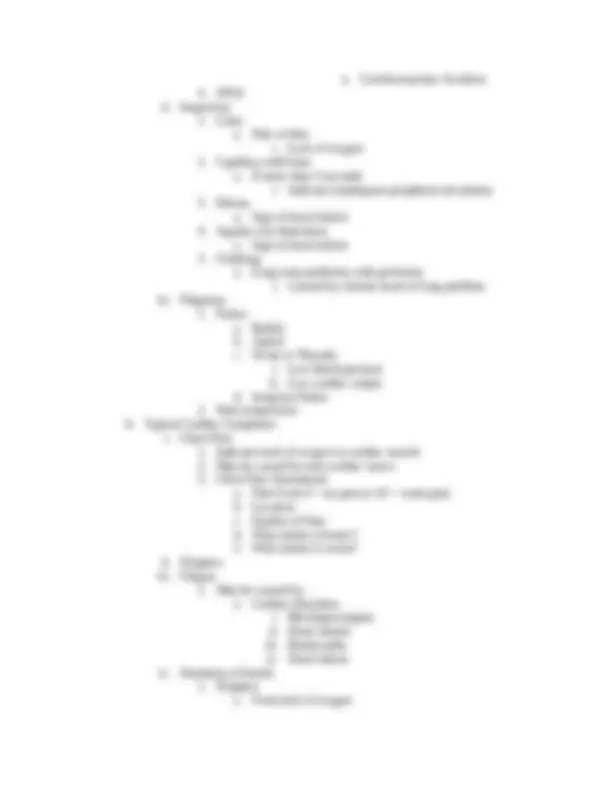
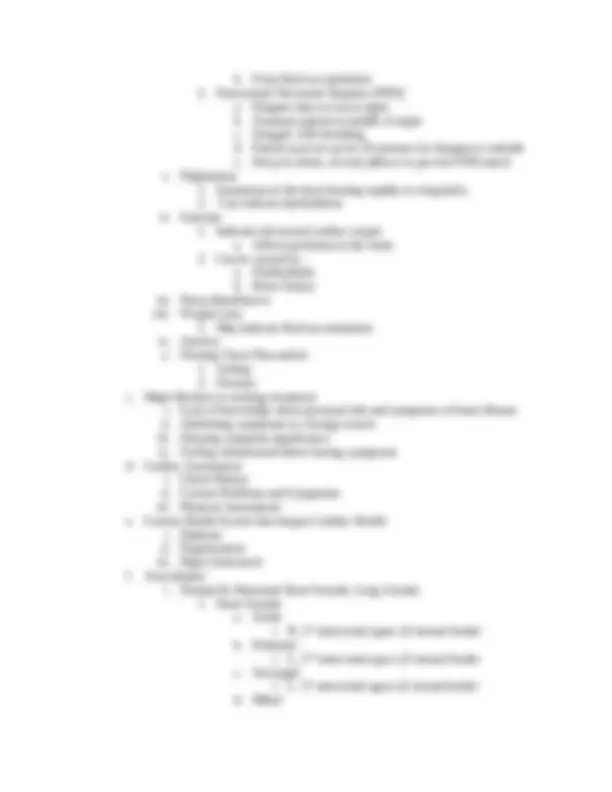
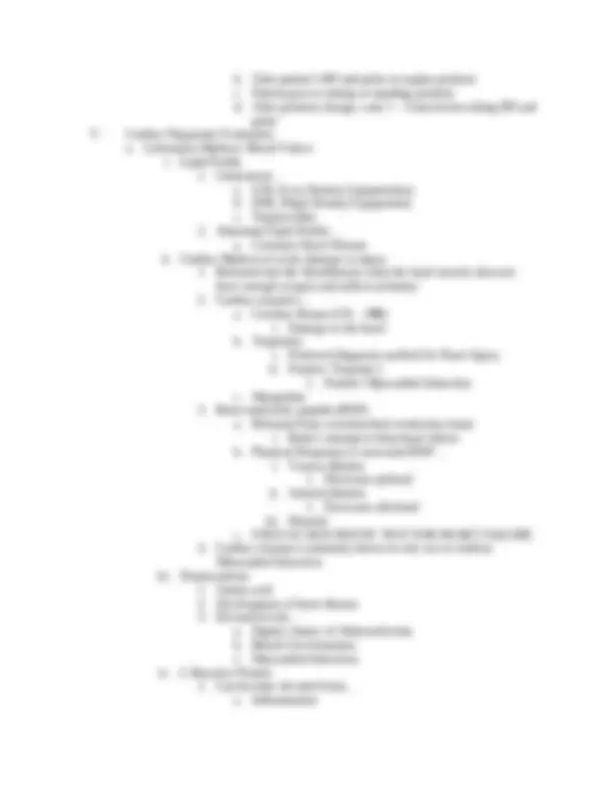
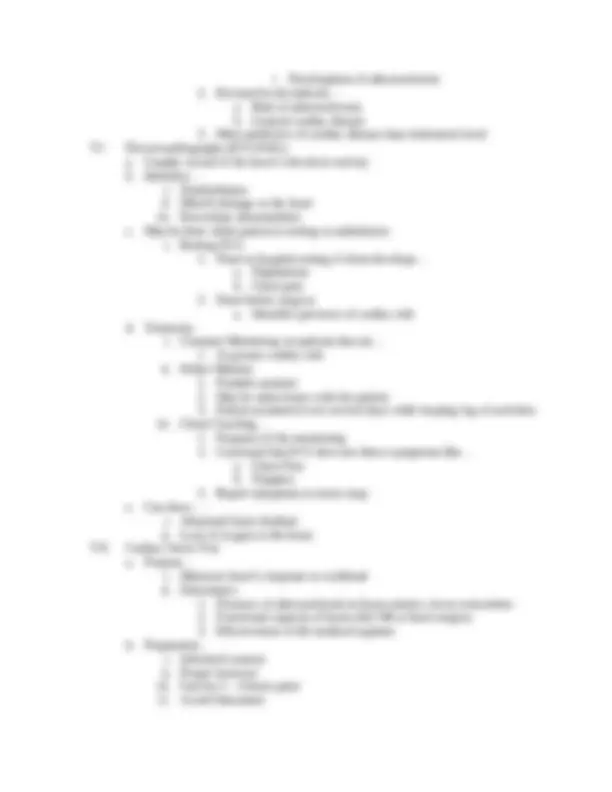
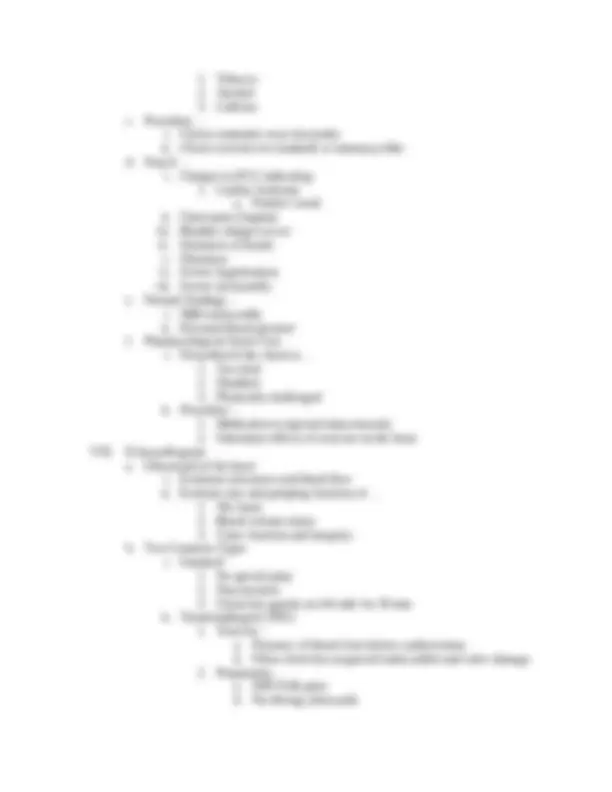
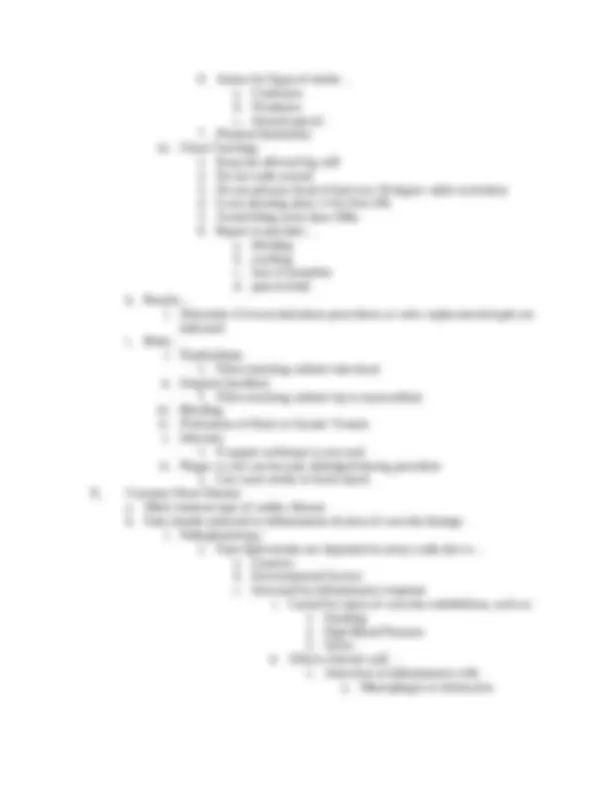
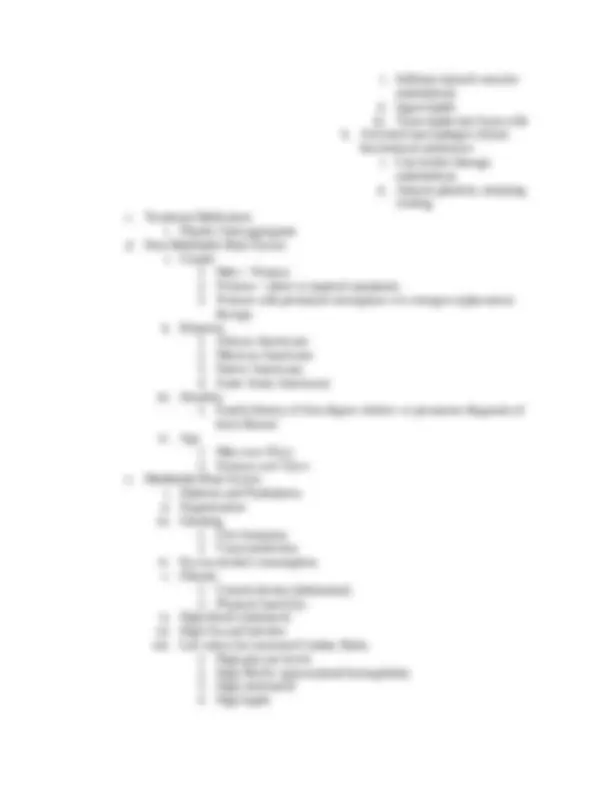
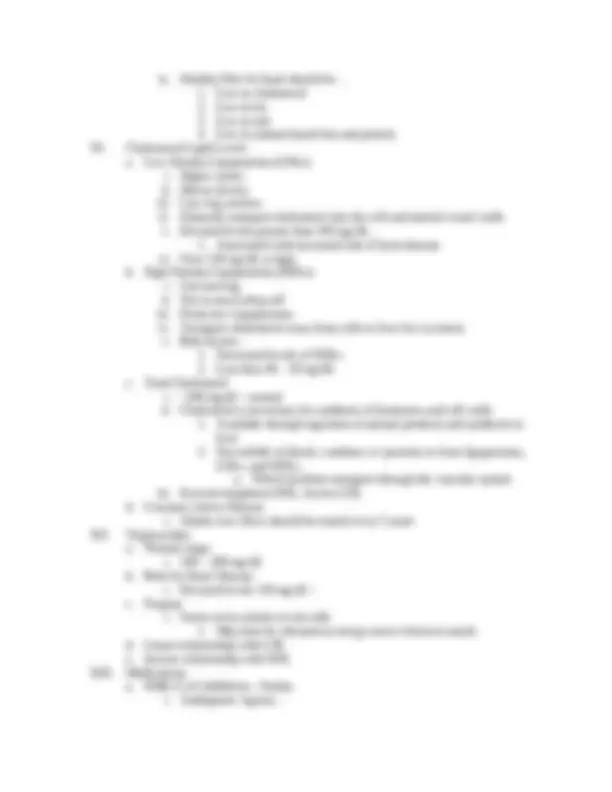
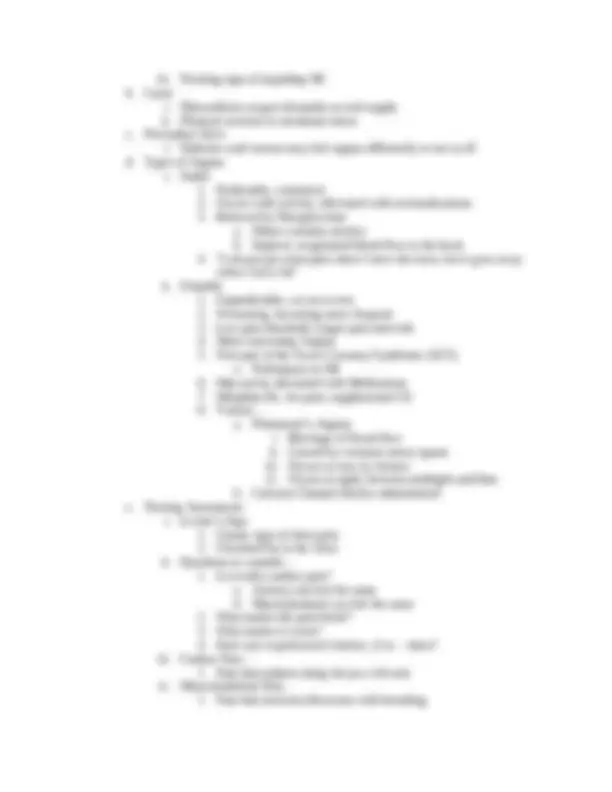
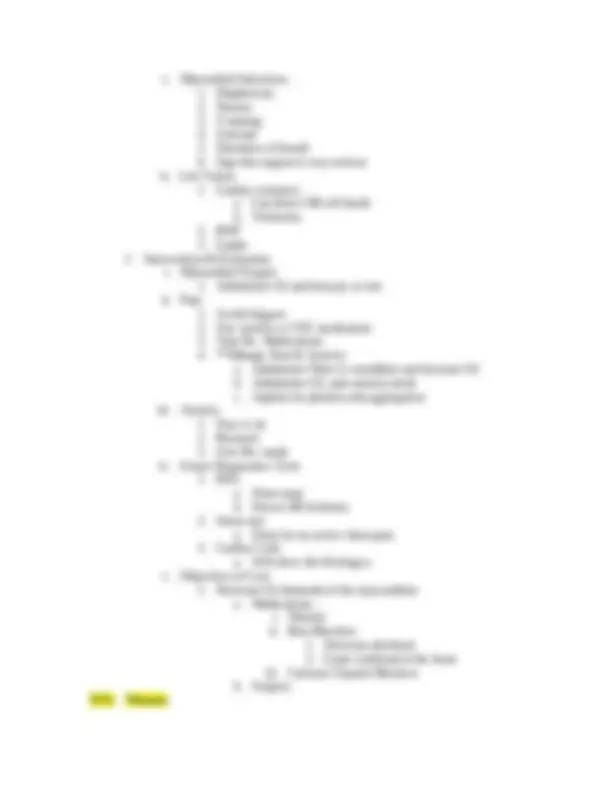
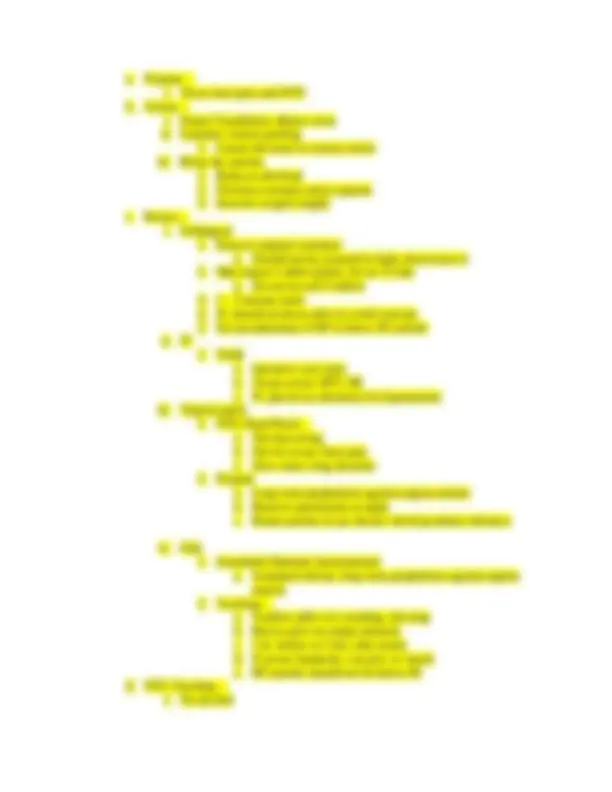


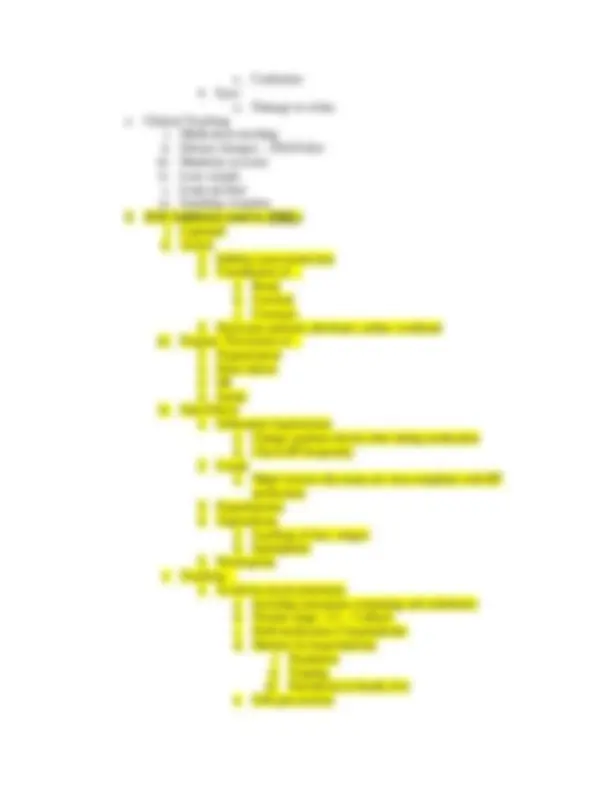
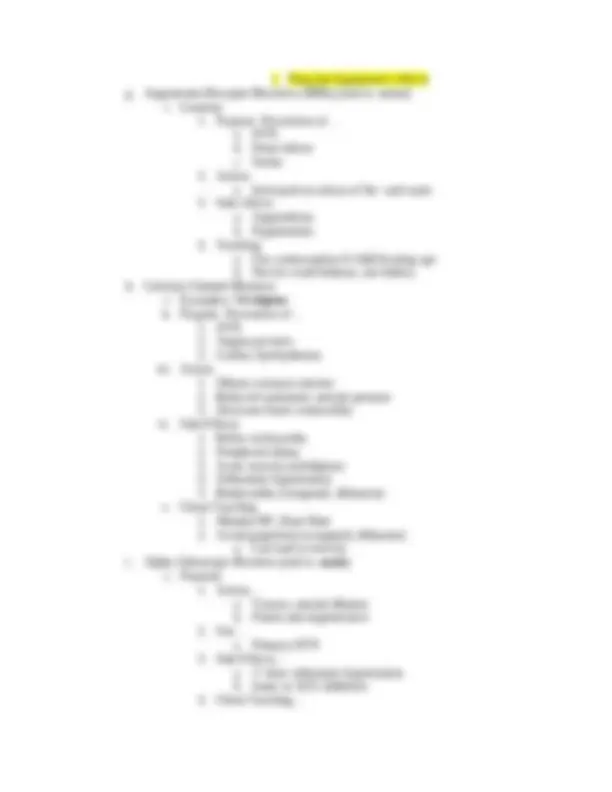
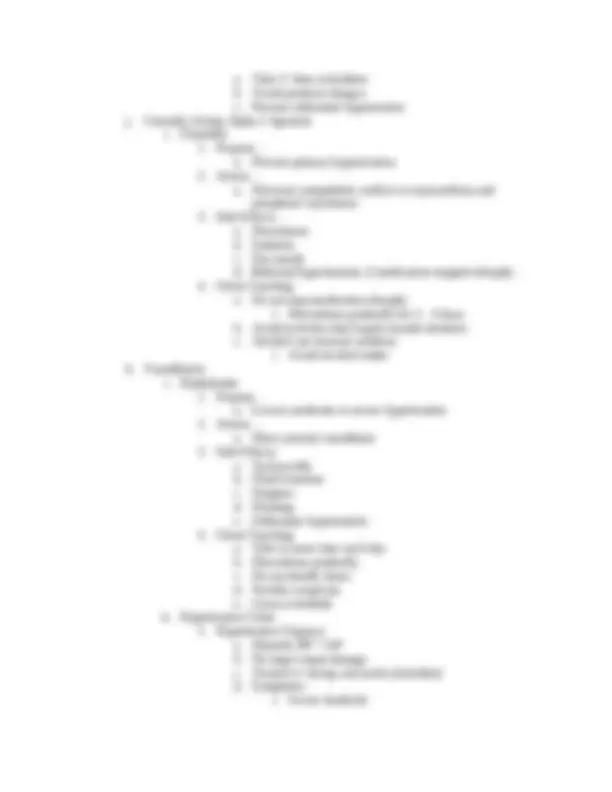
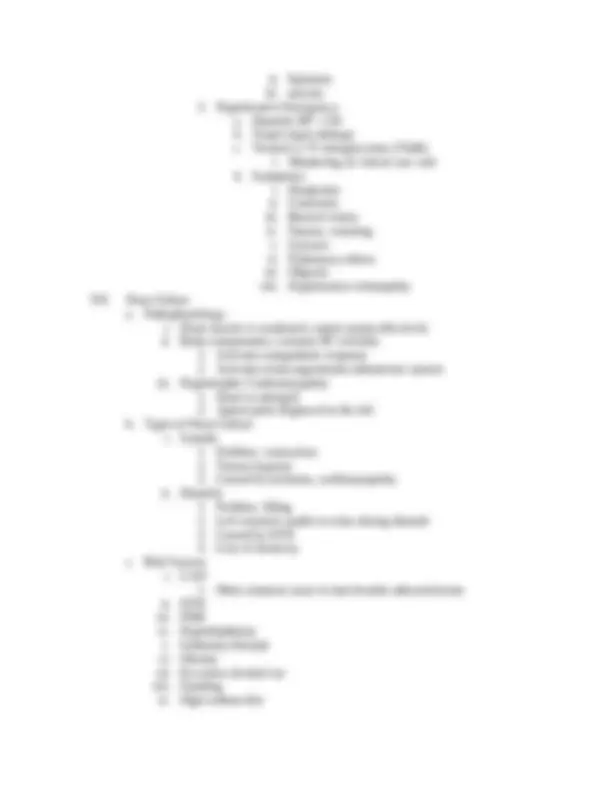
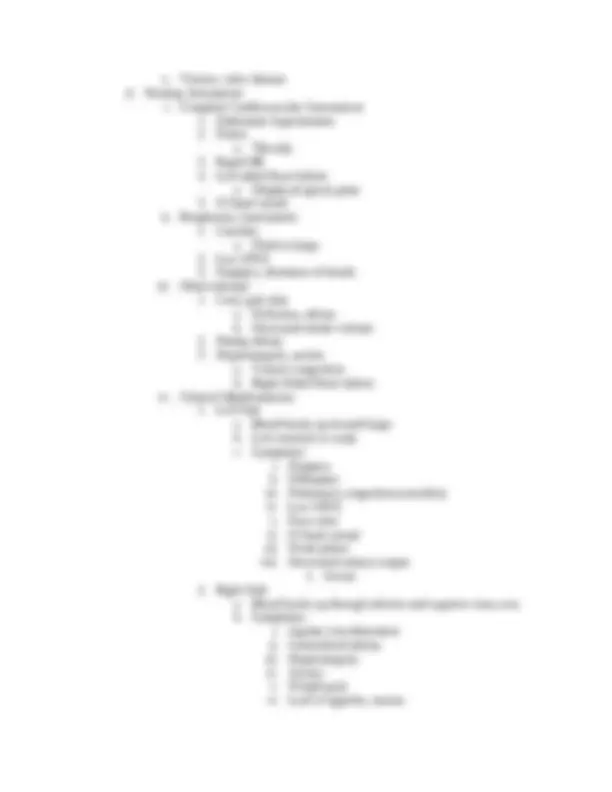
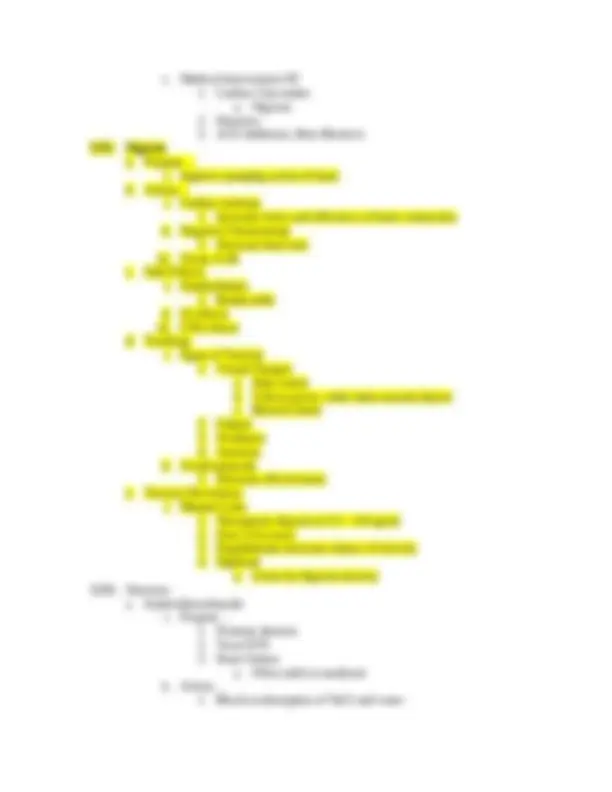

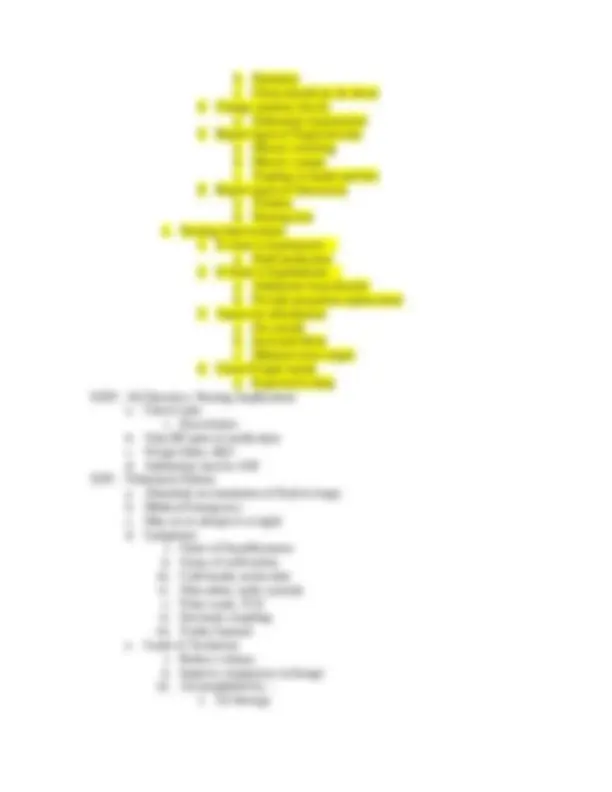
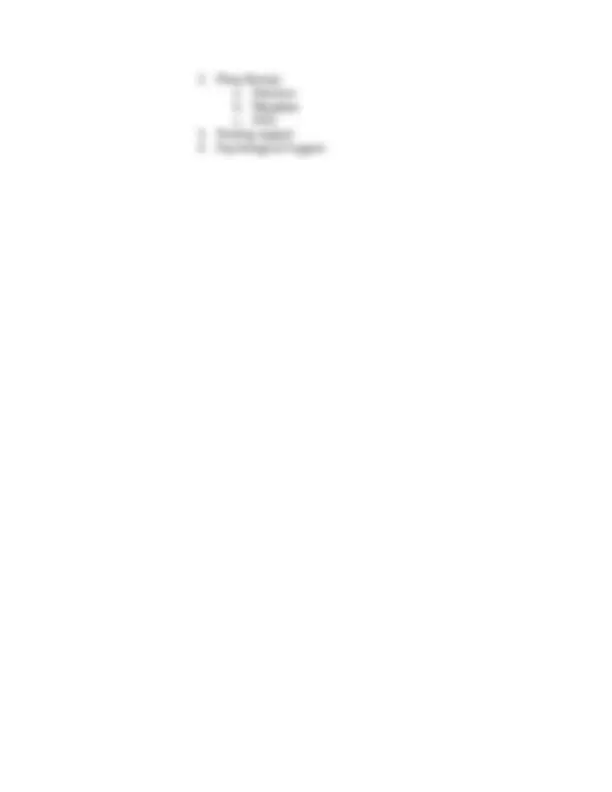


Study with the several resources on Docsity

Earn points by helping other students or get them with a premium plan


Prepare for your exams
Study with the several resources on Docsity

Earn points to download
Earn points by helping other students or get them with a premium plan
Community
Ask the community for help and clear up your study doubts
Discover the best universities in your country according to Docsity users
Free resources
Download our free guides on studying techniques, anxiety management strategies, and thesis advice from Docsity tutors
30+ page outline covering everything needed to know in MedSurg1 regarding the Cardiovascular System!
Typology: Study notes
1 / 31

This page cannot be seen from the preview
Don't miss anything!
























Cardiac Exam Outline I. Physiology review a. Heart Chambers i. Right Chamber ii. Left Chamber iii. Atria iv. Ventricles b. Coronary Arteries i. If either gets blocked, heart muscle on that side die c. Systole vs Asystole d. Electrical Conduction – SA node i. An area of the heart that transmits impulses triggering the heartbeat from one end of the heart to the other e. Cardiac Output: 4L/min is normal i. Preload
i. Fatigue ii. Shortness of breath iii. Angina iv. Palpitations v. Leg pain vi. Dizziness vii. Syncope d. At Risk for i. Fluid Overload ii. Dehydration iii. Hypertension III. Health and Wellness a. Modifiable Factors i. Negative Risk Factors
a. Cerebrovascular Accident
b. From fluid accumulation
ii. Murmurs, Bruits, Rubs
b. Take patient’s BP and pulse in supine position c. Patient goes to sitting or standing position d. After position change, wait 1 – 3 min before taking BP and pulse V. Cardiac Diagnostic Evaluation a. Laboratory Markers: Blood Values i. Lipid Profile
i. Organize transportation
i. Infiltrate injured vascular endothelium ii. Ingest lipids iii. Turns lipids into foam cells b. Activated macrophages release biochemical substances i. Can further damage endothelium ii. Attracts platelets, initiating clotting c. Treatment Medication i. Platelet Anti-aggregants d. Non-Modifiable Risk Factors i. Gender
b. Increases HDLs
2. Action… a. Decreases triglyceride levels **b. Increases HDL levels
v. Myocardial Infarction…
a. Purpose… i. Treat chest pain and HTN b. Action… i. Potent Vasodilator, dilates veins ii. Systemic venous pooling